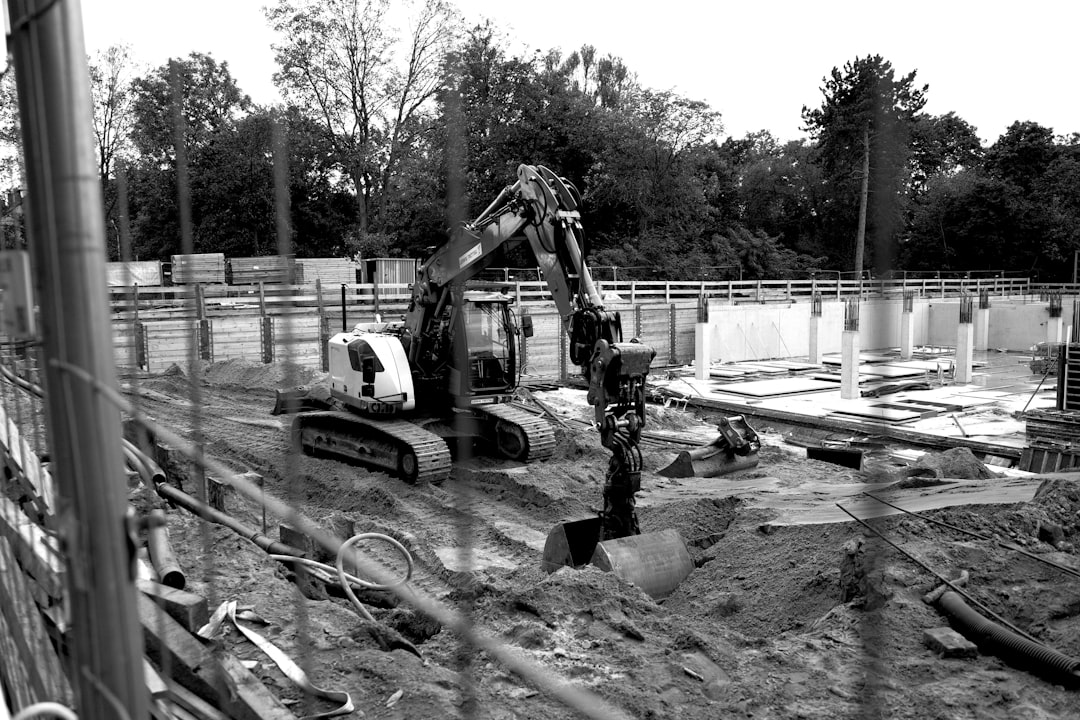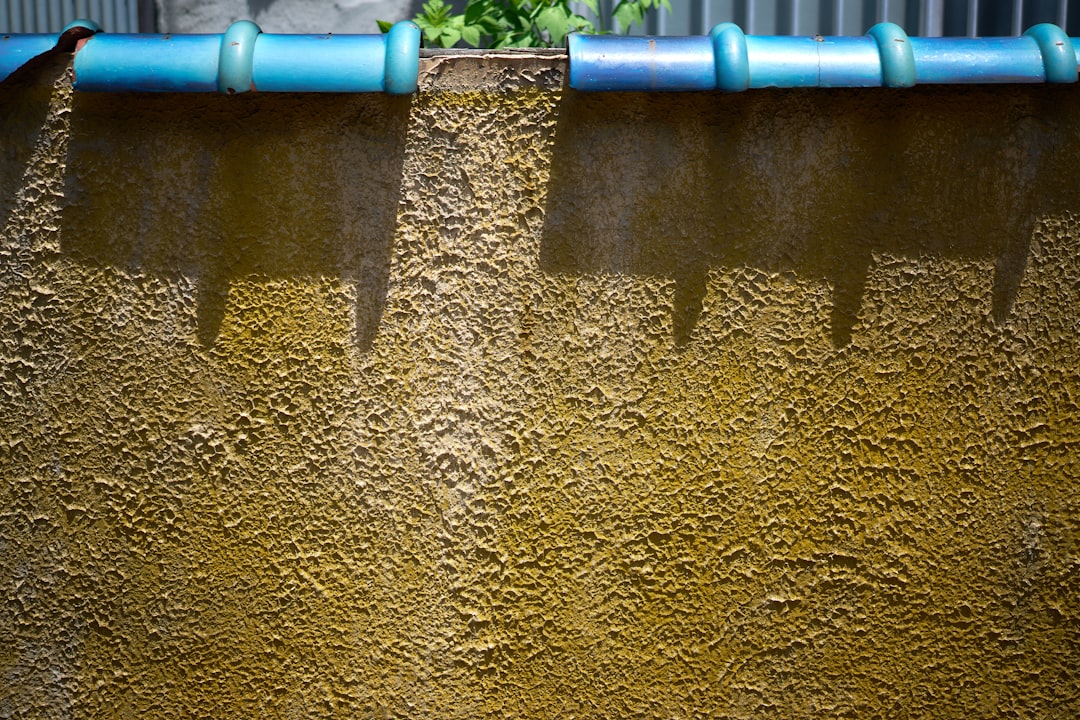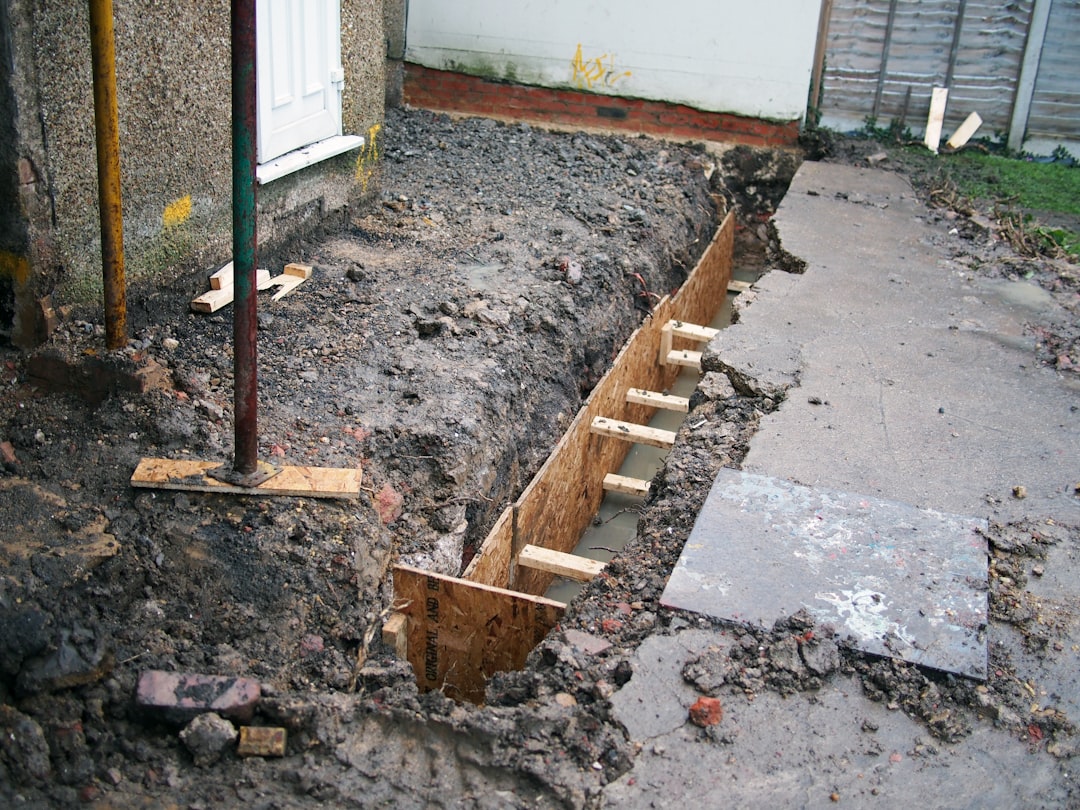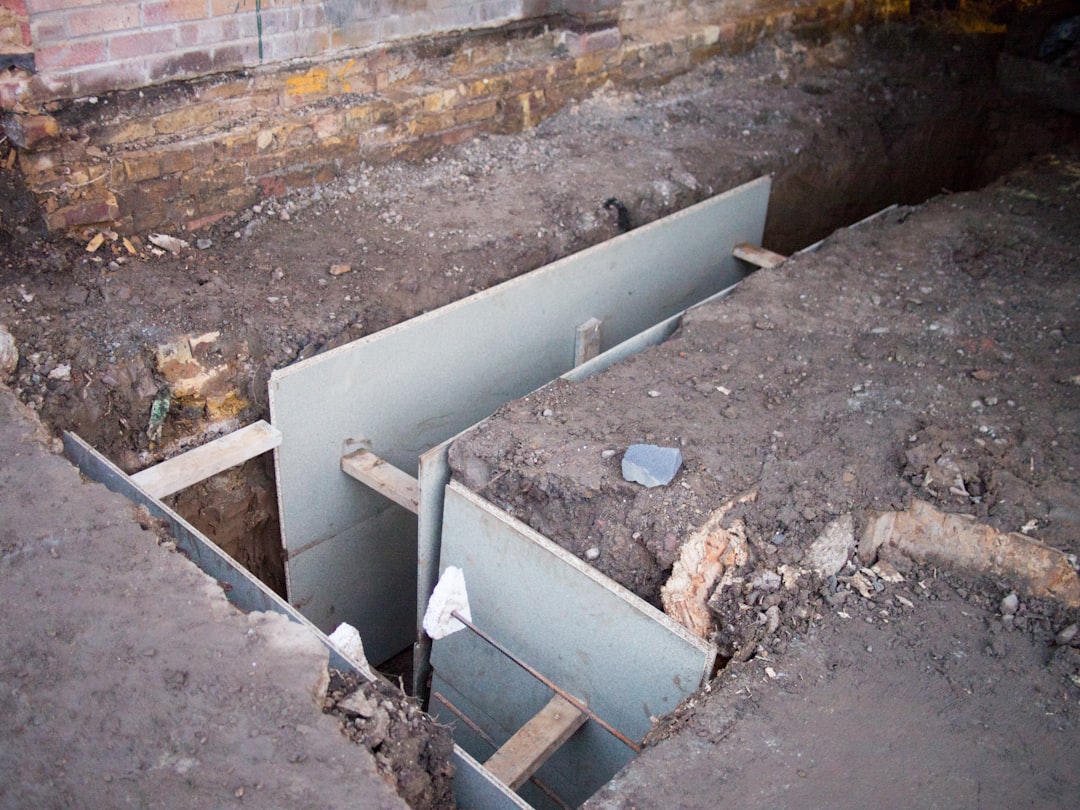

Engage prospects with a scan and streamline customer engagement with FREE QR code marketing tools by Sona – no strings attached!
Create a Free QR CodeFree consultation

No commitment

Engage prospects with a scan and streamline customer engagement with FREE QR code marketing tools by Sona – no strings attached!
Create a Free QR CodeFree consultation

No commitment
In today’s digitally driven world, QR codes have evolved from a novelty to a strategic powerhouse in bridging offline engagement with online action. For drainage contractors, these dynamic codes represent a highly effective way to connect prospective clients with service information, streamline lead capture, and accelerate project inquiries without requiring an app or complex digital onboarding.
The drainage sector thrives on physical touchpoints, from jobsite signage to branded vehicles and direct mailers. Yet, a persistent challenge is missing high-value prospects who interact with these assets but do not immediately reach out, leading to untapped opportunities and untracked revenue. QR codes seamlessly link these real-world assets to digital content such as drainage system installation videos, project request forms, and water management solutions, while enabling precise tracking and real-time customer insights.
An optimized QR code strategy enables drainage contractors to simplify stormwater management education, foster timely client communication, and transform every marketing or service moment into actionable engagement. By addressing pain points like late lead capture, lack of visibility into anonymous interest, and inconsistent follow-up, growth-minded drainage businesses are maximizing results with QR-driven access and automation.

QR codes bridge the gap between physical marketing assets and digital experiences, making it easier to drive meaningful actions like project inquiries and service requests while reducing the risk of losing out on high-fit prospects who do not initially make contact. A single scan can take a homeowner from a fence sign to an estimate form in seconds, or help a facility manager download stormwater documentation on the spot. The key is to align each code with a clear objective and a frictionless destination.
Replacing outdated analog processes is where QR codes deliver immediate wins. Paper job forms can be replaced with mobile-friendly digital forms that auto-fill critical fields and sync to a CRM. Printed brochures can point to living landing pages with up-to-date before and after galleries, while static business cards can give way to vCards that add your full profile to a contact list instantly. This shift reduces manual errors, shortens time to response, and makes every interaction measurable.
For drainage contractors, modernizing lead intake is as simple as replacing analog handouts with QR-enabled experiences that sync directly into your CRM or project pipeline platform. Automations can route leads by territory, trigger SMS confirmations, and schedule follow-up tasks. Platforms like Sona QR make it easy to manage dynamic codes, update destinations without reprinting, and connect scan data to Sona.com for deeper attribution from scan to revenue.

Drainage contractors face a disconnect between in-person visibility and online engagement. Trucks, yard signs, and project flyers generate attention, yet those interactions often go untracked because they do not flow into a digital system. QR codes fix that gap by turning every physical touchpoint into an actionable entry point with measurable outcomes. With a fast scan, homeowners and property managers can request quotes, view installation videos, or download maintenance guides, which boosts engagement and accelerates conversion.
Speed matters in this category. When heavy rain or pooling water creates urgency, prospects will not wait to research multiple providers. QR codes reduce the steps required to engage by removing the need to type URLs or remember phone numbers. Real-time access to booking links, checklists, and warranty information increases trust and captures interest before it fades. See contractor QR how‑to.
QR code-enhanced appointment cards, equipment signage, and warranty flyers are raising the bar for timely, measurable engagement. When scan activity is monitored in a dashboard, your team can prioritize hot leads, automate reminders, and ensure no high-value prospect goes unnoticed. See QR benefits for construction.

Different objectives require different QR code formats. Drainage contractors can simplify operations by selecting the right format for each job and connecting it to the toolchain that powers their pipeline. Managing all codes centrally avoids fragmentation and ensures consistent branding across assets.
Dynamic codes are especially useful for campaigns that evolve over time, while static codes are suitable for destinations that will never change. The list below highlights formats most relevant to drainage services and explains when to use each one.
With Sona QR, contractors can generate and manage these formats in one place, update destinations on the fly, and track performance across every code. Centralization eliminates accidental duplication and ensures a clean, consistent data trail. Start creating QR codes for free.

Many drainage contractors underutilize high-traffic offline touchpoints where interest begins. The opportunities are often right in front of the team, yet without a clear digital path, intent is lost. When QR codes are placed thoughtfully in these locations, they create a constant inflow of measurable opportunities.
Start by auditing every surface and handoff in your business. Trucks, fence wraps, equipment, invoices, door hangers, and yard signs are all potential conversion points. Assign unique codes to each placement so you can see which surfaces work and double down on top performers.
Addressing audiences where they already engage and providing a tracked path to conversion resolves missed opportunities and improves follow-up. As scan volume grows, you gain granular insight into which communities, placements, and messages drive new business. See updated QR best practices.
QR codes are versatile enough to support both lead generation and customer success. The best use cases start with a clear business objective and a short, benefit-driven CTA that sets expectations for what the scan delivers.
Pair each use case with a simple landing experience. Keep forms short, preload known context like a campaign tag or service type, and confirm the next step on-screen. This approach builds confidence and increases completion rates.
Each use case not only accelerates conversion but also turns anonymous interest into known contact records. Your sales and field teams gain actionable data to prioritize follow-up and tailor the conversation to the service requested.
Each scan is a signal. It reveals that someone saw your brand, took out a phone, and expressed intent by choosing to engage. If you deploy multiple codes across touchpoints, you can automatically segment audiences by journey stage, location, and service interest, then use that segmentation to deliver precise follow-up.
Drainage businesses benefit from distinguishing between residential and commercial prospects, as well as between service types like foundation drainage, French drains, and stormwater systems. Tagging each code accordingly lets you personalize emails, SMS reminders, and ads based on what a scanner wants.
With Sona QR, each code can carry metadata about placement, service category, and journey stage. That data flows to Sona and your CRM so you can retain context, orchestrate personalized nurturing, and measure progression toward revenue.
Disconnected campaigns lead to inconsistent messaging and wasted spend. Integrating QR codes across channels ensures that every offline impression has a corresponding digital next step, and that all engagement is measured in one system. This creates a cohesive buyer journey that moves smoothly from awareness to consideration to consultation.
Focus first on the channels that already produce visibility. If trucks, jobsite signage, and direct mail are prominent in your mix, standardize QR design and messaging across these assets. Use dynamic destinations so creative can be reused while content stays current.
Bringing QR engagement into a centralized platform like Sona QR creates a single source of truth. You can monitor performance at a glance, compare channels, and sync scan data with your CRM and ad platforms for accurate attribution across the entire marketing mix.
A disciplined rollout ensures QR codes do more than decorate your materials. Use the steps below to plan, launch, and optimize campaigns that drive measurable business outcomes.
Start with a single, high-impact goal such as increasing estimate requests in a specific service area or boosting enrollment in a recurring maintenance plan. Define what success looks like, including target scan volume, conversion rate, and expected revenue impact.
For drainage contractors, strong first campaigns include scan-to-estimate yard signs on active jobs, invoice QR codes to enroll in maintenance plans, or door hangers with a seasonal inspection offer. Pick one, craft the destination experience, and prepare your team to promote it.
Select dynamic codes for campaigns that require tracking, retargeting, or content updates after printing. This lets you change offers and A/B test landing pages without reprinting assets. Static codes are suitable for fixed destinations such as evergreen maintenance PDFs.
Match the format to the goal. Use forms for lead capture, web links for education or videos, and SMS or email prompts for quick support requests. Keep the experience mobile-first and ensure that all pages load quickly.
Apply your logo, brand colors, and a high-contrast frame to make the code stand out. Place a short, benefit-driven CTA near the code such as Scan to Book a Free Estimate or Scan for Stormwater Compliance Docs. Ensure the quiet zone around the code is clear of graphics.
Test across iOS and Android devices, various camera apps, and different lighting conditions. For vehicles and glossy signs, confirm that the size and contrast work at a distance and from an angle. Address scanning issues before mass deployment to avoid wasted impressions.
Roll out the code where your target audience is most likely to engage. Trucks and fence banners capture attention on active jobs, direct mail reaches targeted neighborhoods, and proposals influence stakeholders late in the journey. Use unique codes per placement so analytics reveal which surfaces perform.
Coordinate messaging and offers across channels. For example, pair a neighborhood postcard campaign with matching door hangers and a jobsite banner in the same area. Consistent CTAs reduce confusion and strengthen recall.
Track scans by time, location, device, and placement. Monitor scan-to-lead and lead-to-appointment conversion rates, not just scan counts. Use results to adjust CTA copy, landing page content, and placement sizes or locations.
Iterate continuously. Swap destinations on underperforming codes, refine forms based on drop-off data, and shift budget toward placements with higher conversion rates. Tools like Sona QR and Sona.com enable real-time changes and end-to-end attribution from scan to revenue.
Drainage contractors must close the loop between offline engagement and revenue generation. Without analytics, interest remains invisible and marketing performance becomes guesswork. Comprehensive tracking ensures every scan is captured, contextualized, and acted upon within your pipeline.
A strong analytics setup shows which assets drive high-intent actions like scheduled assessments, proposal sign-offs, and maintenance plan enrollments. The insights inform budget allocation, staffing, and inventory planning, especially during rainy seasons when demand spikes.
Sona QR captures detailed scan data, while Sona.com connects those scans to downstream engagement and revenue through identity resolution and multi-touch attribution. The combined view turns QR codes from novelty links into a performance channel you can scale with confidence. Read more on measuring pipeline impact.
QR codes create compounding value when they are unique, well-tagged, and connected to automation. The more precisely you manage your codes, the more insight you gain about what moves the needle. A few practical practices can rapidly increase both scan rates and conversion.
Make sure your field teams know how to introduce QR-enabled experiences during jobsite walk-throughs. A short explanation about convenience and privacy can overcome hesitancy, especially with homeowners who are new to scanning.
By equipping service vehicles and job completion packets with QR codes tied to automation, contractors transform every physical interaction into a continuing digital relationship. Over time, this reduces missed opportunities, shortens response times, and improves customer satisfaction.

Real-world deployments show how QR codes turn everyday materials into conversion engines. The most successful contractors keep CTAs simple, align destinations with the moment, and measure everything. Even small changes, like relocating a code on a truck for better visibility, can boost engagement.
Use these examples to spark ideas that fit your business model, service lines, and markets. Tailor the offer, destination, and follow-up to the pain points your customers feel most acutely.
These approaches solve common pain points like untracked interest, slow follow-up, and missed upsell moments. The consistent thread is clarity at the scan moment, a destination that delivers value, and measurable next steps for the business.
Experience shows that the details of QR execution determine outcomes. Clear calls to action, thoughtful placement, and rigorous testing increase scan rates and reduce frustration. Technical missteps like reflective finishes or busy backgrounds can undermine even the best creative.
You can also improve performance by aligning CTA language with the customer’s immediate need. Phrases like Scan to Book a Free Assessment or Scan for Rain-Ready Inspection communicate exactly what will happen next, which builds trust and drives action.
QR codes have fundamentally redefined how drainage contractors engage current and prospective clients, enabling every physical asset to serve as a branded digital entry point. By surfacing previously anonymous interest, capturing timely signals of engagement, and offering seamless transitions from offline to digital, contractors move leads from jobsite curiosity to project inquiry in moments. The outcome is a connected customer experience, smarter attribution, and higher conversion rates.
When you combine disciplined deployment with end-to-end analytics, QR codes become a growth engine. Platforms like Sona QR and Sona.com help you generate codes, update destinations without reprinting, capture scan data, and connect those interactions to pipeline and revenue. The result is proactive marketing and operations that meet modern buyer expectations and make every scan count toward smarter, more efficient business growth.
QR codes have transformed the drainage contracting industry from traditional service calls into dynamic, measurable growth opportunities. Whether it’s streamlining customer acquisition, enhancing client communication, or providing instant access to vital drainage system information, QR codes replace cumbersome paperwork with quick, mobile-friendly interactions that capture real-time data and boost operational efficiency. Imagine your clients scanning a code on-site to instantly access maintenance records or troubleshooting guides—saving time and building trust.
With Sona QR, drainage contractors can create dynamic, trackable QR codes in seconds, update information instantly without reprinting, and connect every scan directly to improved service outcomes and client satisfaction. No more guesswork, no missed follow-ups—just smarter, more profitable engagements that set you apart.
Start for free with Sona QR today and turn every scan into a powerful tool for growth and customer loyalty.
Drainage contractors offer services such as drainage system installation, stormwater management, foundation drainage, French drains, sump pump upgrades, erosion control, and commercial stormwater systems.
You can find reliable drainage contractors by engaging those who use modern tools like QR codes for seamless communication, real-time customer insights, and measurable engagement from physical touchpoints such as jobsite signage, vehicles, and direct mailers.
Hiring a drainage contractor ensures expert management of water issues, access to timely service including emergency responses, clear education on stormwater management, and measurable engagement that speeds up inquiries and project completion.
The article does not provide specific cost details for hiring drainage contractors.
Best practices include using QR codes for easy access to services and information, clear communication of project needs, timely follow-up, leveraging digital tools for estimates and maintenance plans, and ensuring engagement through measurable offline and online touchpoints.
Drainage contractors use QR codes on signage, vehicles, and documents to connect clients to digital content like estimate forms, installation videos, and maintenance guides, enabling faster inquiries, better tracking, and easier follow-up.
Useful QR code formats include web links for service pages, forms for lead capture, vCards for contact sharing, PDF downloads for compliance documents, Wi-Fi access codes for site coordination, and SMS or email prompts for quick communication.
QR codes should be placed on site signage, fence banners, fleet vehicle graphics, job completion packets, direct mail, door hangers, and trade show materials to capture and convert interest effectively.
They can track scans by time, location, and device, attribute inquiries to specific QR codes, monitor conversion rates, integrate data with CRM systems, and continuously refine campaigns based on analytics for improved ROI.
Speed is crucial because clients facing urgent issues like heavy rain or pooling water need quick solutions, and QR codes reduce engagement steps, enabling fast bookings and information access before interest fades.
Use Sona QR's trackable codes to improve customer acquisition and engagement today.
Create Your FREE Trackable QR Code in SecondsJoin results-focused teams combining Sona Platform automation with advanced Google Ads strategies to scale lead generation

Connect your existing CRM

Free Account Enrichment

No setup fees
No commitment required

Free consultation

Get a custom Google Ads roadmap for your business






Launch campaigns that generate qualified leads in 30 days or less.
